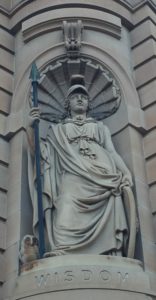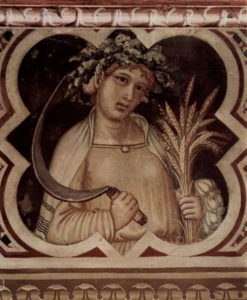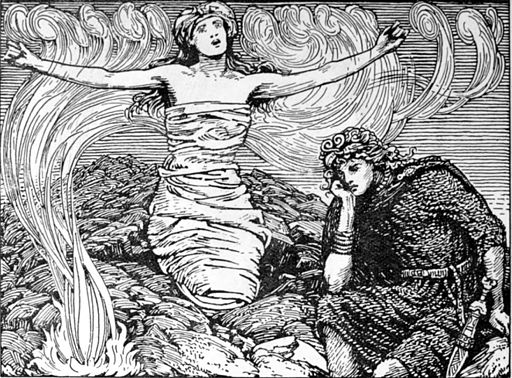 About three and a half years ago I had a strange, early-morning encounter. It was about 7am, pitch black winter gloom, and I was walking to work. As I passed by a tree, I looked up and found two gleaming eyes looking back at me.
About three and a half years ago I had a strange, early-morning encounter. It was about 7am, pitch black winter gloom, and I was walking to work. As I passed by a tree, I looked up and found two gleaming eyes looking back at me.
It was big, and white, and intense. And as the owl stared at me, as I stared at it, a word imposed itself upon my consciousness. “Minerva.”
“Oh, “ I responded, “Minerva, like Athena!”
“NO. MINERVA.”
This bit of insistence on specificity was interesting given how syncretic the Greek and Roman cults were, and given that I was receiving this message from a North American owl that surely didn’t have much of a relationship with ancient Rome.
Ok, well. We stared at each other for a bit longer (it was very close!) and then I continued on my way. Later I found out that there had been a spate of owl attacks on early morning walkers in the area, but not on me. I did spend some time after that researching Minerva, however, and discovered her to be a central goddess for the Romans, ruling over wisdom, social harmony, reflection, even healing. I was jealous of Roman reconstructionist pagans: it seemed like those Roman pagans wrote everything down.
Now. At the time I was experiencing a good bit of psychic turmoil and one day in wrestling with this turmoil it visualized itself for me as a cloud of wasps buzzing about me, stinging me with painful thoughts and feelings. “What can I do about this?” I wondered. Then, an imaginary owl came flying in. “If you do what I instruct, I will drive these wasps away from you. Deal?” Deal.
So the owl came in and swept the wasps away with flaps of her strong pinions. And thus was I obliged. I asked Odin about this odd circumstance of suddenly dealing with an ancient Roman goddess at the behest of a modern North American owl. He could have said, “well I’m an Old Norse god and you’re a modern Australian-American, so what the fuck?” Instead he said, “there is some work you need to do and she is the one to help you do it, so I am stepping back for a little while.”
The first instruction was to write a song in Minerva’s honor. I did that. It is 18 minutes long, very complex and interesting, with lyrics about healing and transformation through radical acceptance. I hope to have a good recording of it by the end of the year. It is fun to perform. People seem to like it.
The second instruction was more challenging: attend a 10-day silent Vipassana retreat as taught by S. N. Goenka. I have wanted to do this for many years, and the stars have never aligned. Now I was instructed. It was a grueling experience, and profoundly transformative. Profoundly. In ways I could never have imagined.
Goenka’s approach to lay Buddhist meditation practice could almost be called Chaos Buddhism: emphasis on traditional structure and philosophy, but only as a means to allow the individual to faithfully and safely articulate their own personal development and realization. No dogma here, just profound discipline (and a lot of physical and emotional pain, the kind that silly Westerners run away from all too readily, not realizing it is the door to healing).
I also discovered that the lyrics for my Owl Song almost exactly paraphrased teachings and technical advice offered in the course of the 10-day retreat. It was as though I had been primed to gain maximum benefit. I was also struck by the many parallels to Jung’s ideas (even though scholars dismiss Jung’s writings on Buddhism, perhaps with reason). The critical advantage of Goenka’s take on Buddhist practice over Jung’s psychology is this insight: the body is the unconscious mind.
(To be fair, I have since noticed that Jung does also say this, but he never decisively knew what to do with it. Undertake a Vipassana retreat and you will know what to do with it).
Since that time I have maintained a strong daily meditation practice. At first 2 hours a day per the course recommendation, but the realities of work, study, family, creative, community responsibilities have meant that I only do an hour a day. Even this has been profoundly beneficial. It is like clearing my path back to the Well of Wyrd each and every day.
My wasps have diminished, but more importantly, I am more indifferent to the pain they cause, yet without having to resort to denial or dissociation. With expanding powers of acceptance come expanding powers of all types. There is nothing passive about the applied technical practice of Buddhism.
Every day, no matter what else happens, I spend an hour listening to the sensations of the body. Gradually stripping more and more layers of conditioning, trauma, amnesia. This is not just “mindfulness of the present moment,” it goes much deeper (though it necessarily builds on that foundation). If you want to really understand meditation you need to go back to the Eastern sources directly. A lot of the Western adaptations, though well-intentioned, are inadequate.
I have to laugh at how I came to become a Vipassana practitioner, the unlikely confluence of influences. North American owls; Roman goddesses in some sort of alliance with Old Norse gods, all conspiring to get me to study Buddhist meditation of a specific Burmese-Indian strain. Well, ok. Chaos Heathen.
Does it work, though? It works, though. Does it distract me from loving attentiveness to the forms, traditions, and trappings of Heathenry? Not at all, it actually increases my faculties of appreciation. Is this story ridiculous or wonderful? Yes.

 I have noticed from various Heathen quarters a lot of anger about the very existences of Chaos Magic and Chaos Heathenry, and beneath that anger appears to lie fear. I thought it would be interesting to reflect on the nature of this anger and this fear.
I have noticed from various Heathen quarters a lot of anger about the very existences of Chaos Magic and Chaos Heathenry, and beneath that anger appears to lie fear. I thought it would be interesting to reflect on the nature of this anger and this fear. How on earth can a Heathen group function if it is not built on the basis of shared belief? Sounds insane, right? Let me tell you two stories.
How on earth can a Heathen group function if it is not built on the basis of shared belief? Sounds insane, right? Let me tell you two stories. Why Chaos Magic and Heathenism fused together? The guiding thread is skepticism about the importance of belief.
Why Chaos Magic and Heathenism fused together? The guiding thread is skepticism about the importance of belief. Recently I reactivated my interest in Jan Fries-style seidr – namely the induction of shaking, swaying, and trembling as a healing tool. I’d like here to discuss the background to this technique, draw some parallels with the findings of trauma psychology, and discuss my recent initial foray back into the practice.
Recently I reactivated my interest in Jan Fries-style seidr – namely the induction of shaking, swaying, and trembling as a healing tool. I’d like here to discuss the background to this technique, draw some parallels with the findings of trauma psychology, and discuss my recent initial foray back into the practice.